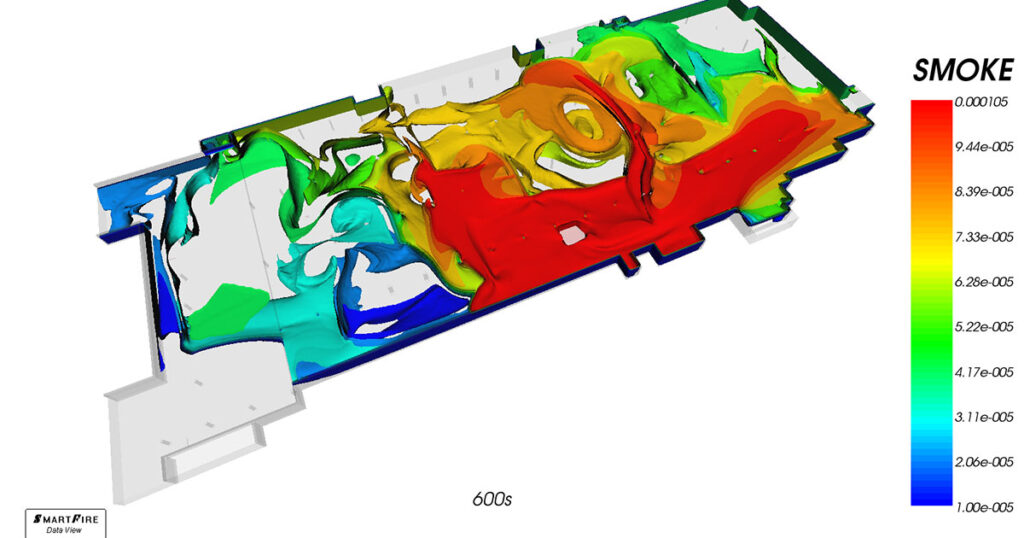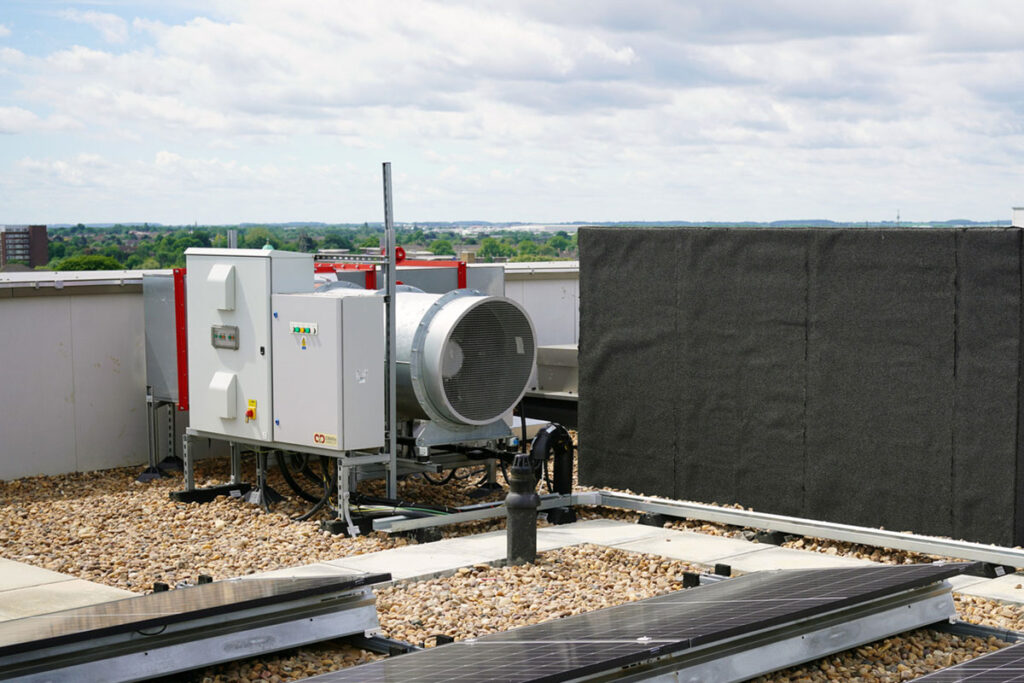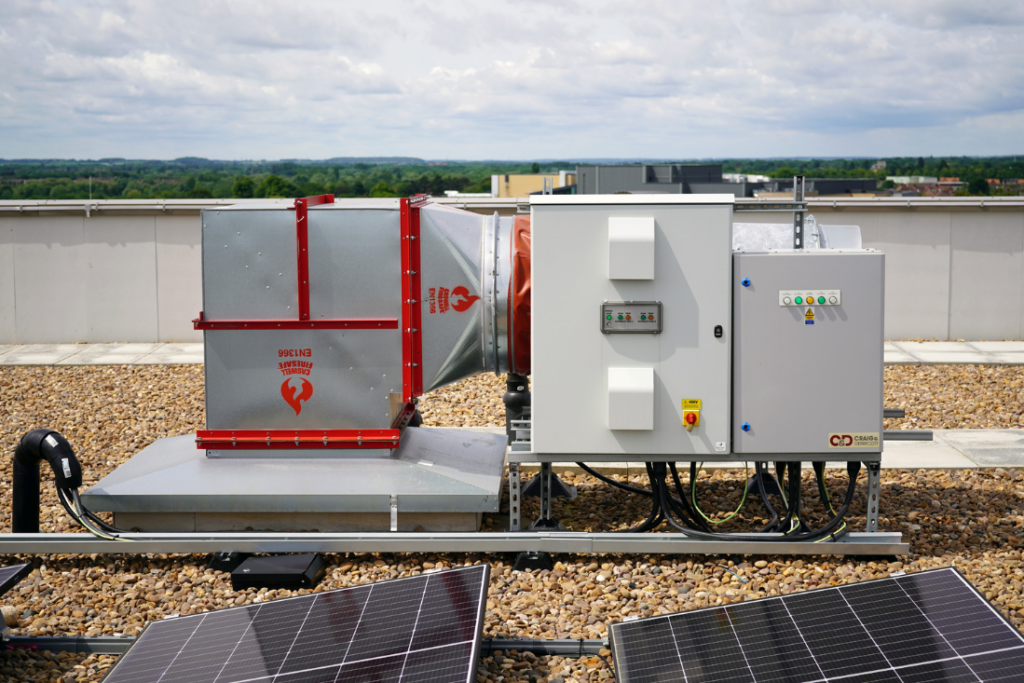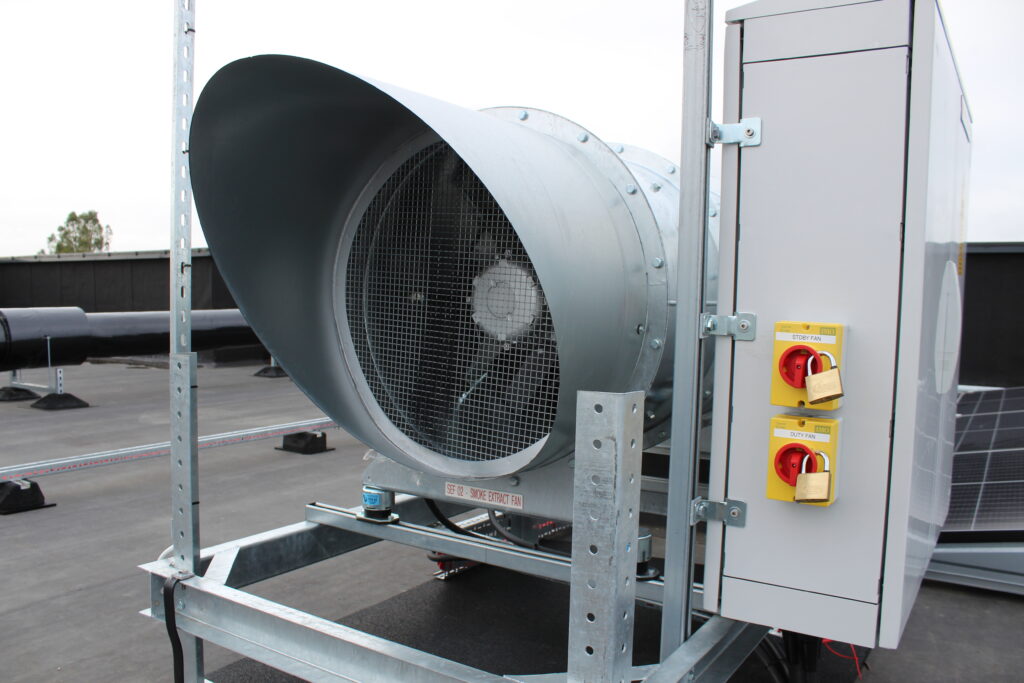Car park ventilation needs to provide both day-to-day air quality ventilation as well as deliver emergency smoke clearance in the event of a fire.
In this article, Bijan Fard from FDS Contracting looks at the factors that must be considered to ensure full compliance with the regulations.
A major threat to life in enclosed spaces is smoke. Alongside the additional day-to-day environmental ventilation requirements, underground car parks pose a significant challenge to achieve compliance and ensure occupant safety.
It’s crucial to implement an adequate system that will remove smoke quickly and efficiently in the event of a fire. Early engagement with a fire safety consultant will be beneficial for both residential and commercial applications and can help provide a rational solution that provides maximum safety and efficiency while also remaining cost-effective for the project.
Types of Systems
Natural Ventilation
This type of system is most commonly found in above-ground car parks. These systems utilise natural airflow to help reduce pollutants to an acceptable level.
Hybrid
When natural smoke ventilation cannot be implemented, impulse or induction fans can be used in addition to the natural openings to improve the cross-flow of air.
Mechanical
Mechanical Systems provide the greatest level of performance for both smoke removal and carbon monoxide (CO) clearance and are required for underground car parks.
Building Regulations
Approved Documents offer guidance about compliance with specific aspects of building regulations in some of the most common building situations. They set out what, in ordinary circumstances, may be accepted as reasonable provision for compliance with the relevant requirements of building regulation to which they refer.
FDS Contracting boasts an in-depth understanding of the requirements of both Approved Document B (Fire Safety) and Approved Document F (Ventilation) meaning that we can deliver peace of mind that the chosen solution will fully comply with all legislation.
Approved Document B (Fire Safety)
AD B offers the best practicable and proportional guidance for the fire safety and fire protection of buildings which are above or contain, enclosed car parks.
AD B outlines the general principles to restrict fire spread within car parks and recommends that the fire load is well defined and that the car park is well ventilated. Ventilation is the most important factor; increased ventilation reduces the risk of fire spreading from one storey to another.
Approved Document F Volume 2 (Ventilation)
Lastly, updated in 2021, AD F vol 2 includes standards for air quality and ventilation for buildings other than dwellings. It also covers requirements for the prevention of condensation.
Specific Challenges of Underground Car Parks
Underground car parks present a particular challenge in terms of ventilation, not only in the event of a fire but also in day-to-day exhaust fumes.
Fire and Smoke Safety
The aim of the car park smoke control system is to provide a safe escape and firefighting access, providing a smoke-free approach to within at least 10m of the seat of the fire.
This is required by the British Standard BS 7346-7 relating to covered car parks for an enhanced firefighting system. To meet the required standards for smoke extraction, mechanical car park systems must achieve at least 10 air changes per hour (ACH).
In full smoke exhaust mode, the system utilises both the impulse or induction fan and the main exhaust fan to efficiently clear the smoke.
Environmental Ventilation
By using Carbon Monoxide (CO) detectors, the Mechanical Smoke Ventilation System automatically activates when CO levels rise above a pre-set limit to ensure a concentration of 30 parts per million (ppm) over an eight-hour period, as set by Approved Document F, is not exceeded.
Using CO monitoring and a stepped control algorithm, we ensure there is sufficient air extraction to ensure the effective removal of day-to-day pollutants while maintaining maximum energy efficiency.
The speed of the main extraction fans will vary based on the levels of CO detected. Between 30ppm to 49ppm, air will move throughout the car park at an exchange rate of three air changes per hour. Over 50ppm the exchange rate will increase to six air changes per hour.
Conclusion
Early engagement with a Fire Safety consultant will help provide appropriate recommendations for a car park design, ensuring that all regulations are met whilst rationalising design. This provides maximum safety and cost efficiency for the project.
FDS Contracting is dedicated to delivering smoke ventilation excellence at every stage from design, installation and commissioning through to service and maintenance. We are leaders because we are specialists. Decades of expertise and innovation allow us to recommend the best possible option and tailor the solution to the individual project.
Our commitment is to help clients achieve their design ambitions while creating safer environments.



